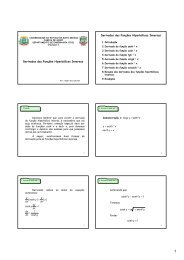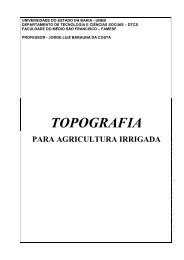Anuário Brasileiro do Arroz 2011 - Unemat
Anuário Brasileiro do Arroz 2011 - Unemat
Anuário Brasileiro do Arroz 2011 - Unemat
You also want an ePaper? Increase the reach of your titles
YUMPU automatically turns print PDFs into web optimized ePapers that Google loves.
Strangers<br />
in the nest<br />
Lack of technological<br />
novelties to fight red<br />
rice infestations have<br />
led specialists to create<br />
greater awareness<br />
of appropriate<br />
management practices<br />
In one of the rooms in<br />
the Agronomy Building at<br />
the Rio Grande <strong>do</strong> Sul Rice<br />
Institute’s Experiment Station,<br />
in Cachoeirinha (RS), images<br />
of red rice infested fields, projected<br />
on a screen, are cause<br />
for concern. The feeling, nevertheless,<br />
is not exclusive to<br />
the team of the institution. All<br />
over Rio Grande <strong>do</strong> Sul, where<br />
the weed marks its presence in<br />
about 60% of the plantations,<br />
farmers, technicians, specialists<br />
and sales people are also very<br />
preoccupied.<br />
The absence of new technologies<br />
to fight the infestation<br />
has led agronomic engineer<br />
Valmir Gaedke Menezes, of<br />
Irga, to predict: “<strong>do</strong> not expect<br />
miracles”. He maintains that<br />
the main manner to render the<br />
problem less difficult is to invest<br />
in grower awareness regarding<br />
correct management practices.<br />
This is justified, since non-recommended<br />
practices, like the<br />
use of non-certified seed, the<br />
application of less than needed<br />
herbicides and same area plantings<br />
for several years in a row,<br />
might trigger intensive red rice<br />
outbreaks.<br />
According to agronomic engineer<br />
Augusto Kalsing, of the<br />
same institution, a great number<br />
of growers have already got<br />
aware and have adhered to the<br />
recommended practices. The demand<br />
for Irga certified seed, for<br />
example, soared over the past<br />
year. He adds that the information<br />
spreading service never<br />
stops. During the 2010/11 crop,<br />
the institute attracted 5 thousand<br />
producers to lectures, field<br />
days and technical itineraries, at<br />
which directives were given on<br />
how to fight the scourge.<br />
DREADED Herbalist and<br />
crop management specialist,<br />
Valmir Gaedke Menezes, of Irga,<br />
considers red rice the number<br />
one problem for the crop, followed<br />
by weed infestations,<br />
pests and diseases. Besides interfering<br />
with the quality of the<br />
kernels and with the field’s potential<br />
productivity rate, it could<br />
ruin the entire crop, depending<br />
on the degree of infestation.<br />
Damages in Rio Grande <strong>do</strong> Sul,<br />
for example, amounted to 1.2<br />
million tons in the past crop,<br />
representing a loss of about R$<br />
200 million, says Menezes.<br />
The use of the Clearfield<br />
system, not in compliance with<br />
the recommended patterns, provides<br />
evidence to what extent<br />
the lack of awareness might<br />
jeopardize the rice growing business.<br />
Now, some 600 hundred<br />
thousand hectares are planted<br />
in line with this system, nonetheless,<br />
Menezes notes, a great<br />
part of these areas are infested<br />
with red rice resistant to herbicides<br />
recommended for this<br />
technology. The researcher also<br />
maintains that in the past crop,<br />
about 70% of the plant and<br />
seed samples, which had evaded<br />
the control within this system,<br />
showed resistance traits.<br />
The use of more than one<br />
tool, with the intention to slow<br />
<strong>do</strong>wn red rice infestations, is essential,<br />
says Menezes. He says<br />
that nowadays the weed is no<br />
longer uniform. As time goes<br />
by, new genetic variations make<br />
their appearance, which make<br />
it necessary to go in search of<br />
new fighting methods. Within<br />
this context, Augusto Kalsing, of<br />
Irga, mentions that “if the potential<br />
yield of the kernels is to<br />
be achieved, all rice plants must<br />
be free from weed interferences,<br />
from seeding to harvest”. A reality<br />
that might add quality and<br />
ease of management to every<br />
different crop.<br />
83


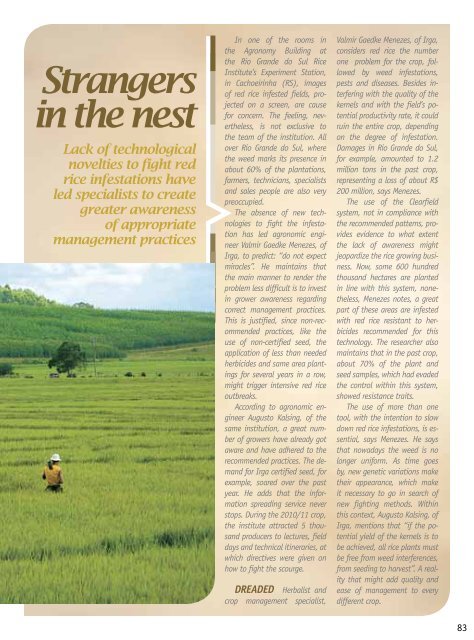
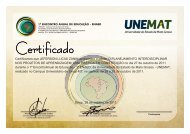
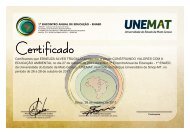
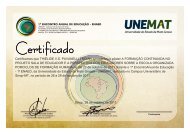
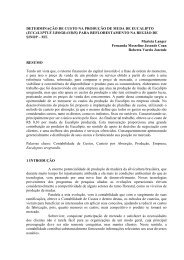
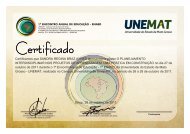
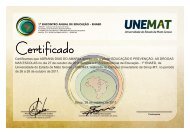
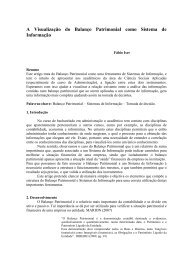
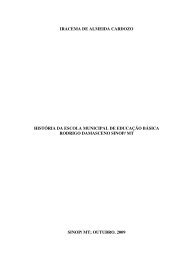

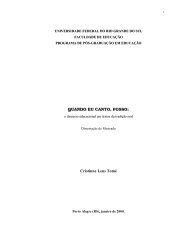
![Aula 31 - Funções Hiperbólicas [Modo de Compatibilidade] - Unemat](https://img.yumpu.com/14334654/1/184x260/aula-31-funcoes-hiperbolicas-modo-de-compatibilidade-unemat.jpg?quality=85)
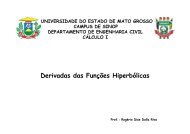
![Aula 31 - Funções Hiperbólicas [Modo de Compatibilidade] - Unemat](https://img.yumpu.com/14332146/1/190x135/aula-31-funcoes-hiperbolicas-modo-de-compatibilidade-unemat.jpg?quality=85)
